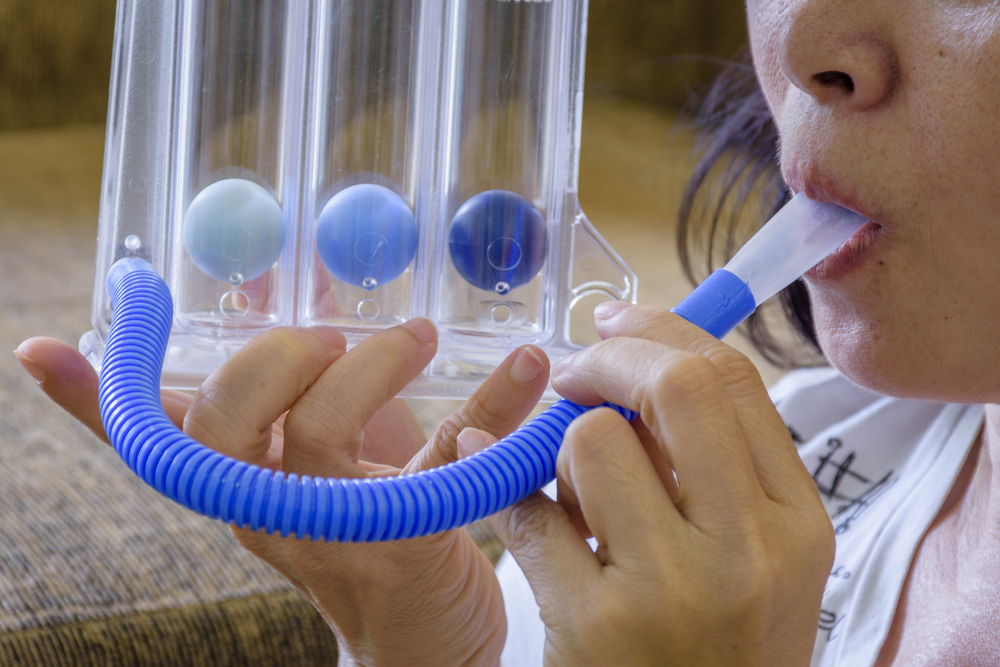At-home Spirometry May Help in Lung Function Monitoring
Written by |

At-home evaluation of lung function using a spirometry device is a “feasible and valid measure” for people with idiopathic pulmonary fibrosis (IPF) who have preserved lung function, clinical trial data show.
However, further study is needed to evaluate the utility of at-home evaluations, since correlations between changes seen at home and in the clinic “were weak, mainly due to variability in the measurements obtained using home spirometry,” the researchers said.
The study, “Home spirometry in patients with idiopathic pulmonary fibrosis: data from the INMARK trial,” was published in the European Respiratory Journal.
Monitoring of lung function among IPF patients, using a spirometry device, is traditionally performed in a clinical setting such as a doctor’s office. The spirometry device measures how much air the patient can exhale after taking the deepest breath possible. This measurement, called forced vital capacity (FVC), is then used to determine the stage of the patient’s PF disease.
However, at-home spirometry is more convenient and allows for more frequent measurements. That, in turn, makes it easier to detect earlier any acute exacerbations — worsening of lung symptoms — that the patient may experience.
Now, an international team of researchers assessed the feasibility and validity of at-home spirometry as a measure of lung function decline in people with IPF, the most common form of PF.
The team analyzed data from the INMARK Phase 4 trial (NCT02788474), which was originally designed to assess the impact of the anti-fibrotic medication Ofev (nintedanib) on biomarkers of disease progression in IPF patients.
A total of 346 patients with IPF and preserved FVC above 80% were randomly assigned to receive Ofev 150 milligrams (mg) twice a day (116 patients) or a placebo (230 patients) for 12 weeks (about three months), followed by an open-label phase in which all participants received Ofev for 40 weeks (about 10 months).
Lung function was monitored using both at-home and clinic spirometry over 52 weeks (one year).
Participants were asked to perform at-home spirometry using the SpiroPro device in the morning, at least once a week but preferably every day. The device recorded and showed the highest value for FVC % predicted. Spirometry in the clinics was performed at the start of the study (baseline) and every four weeks thereafter till week 24 (just under six months), and then at 36 and 52 weeks.
At baseline, at-home spirometry showed a mean FCV of 3,305 milliliters (mL) and 99.6% FVC predicted. In the clinic, the values were 3,241 mL and 97.5% FVC predicted.
In the IPF group analyzed, 83.5% of patients completed the 52 weeks of the study. Among these, those in the Ofev group had a mean FVC rate decline of minus 127.2 mL (measured at home) and of minus 88.8 mL (in the clinic). Those in the placebo group had a mean FVC rate decline of minus 111.8 mL (at-home) and minus 104.1 mL (clinics).
Over the 52 weeks, each participant underwent a mean of 165 at-home spirometry measurements (about 3.4 times per week). The mean adherence to weekly at-home spirometry was 86%, with 31% of the patients showing a complete (100%) adherence to weekly home spirometry.
The results also showed that participants with complete adherence to weekly at-home spirometry had a slightly higher mean FVC and diffusing capacity for carbon monoxide (DLco) — another parameter of lung function — at the study’s start, compared with the patients with lower adherence.
Most participants did the spirometry measures in the morning, with some conducting the assessments in the afternoon or evening. Measurements taken later in the day showed higher variability, the study found.
The researchers found a strong correlation between at-home and clinic FVC measurements, as well as among forced expiratory volume (FEV6) assessments. FEV6 is a forced expiratory maneuver that measures the amount of air exhaled during six seconds.
However, “variability in change from baseline in FVC was greater when measured by home rather than clinic spirometry,” the researchers wrote.
Overall, “home spirometry was a feasible and valid measure of lung function in patients with IPF and preserved FVC, but estimates of the rate of FVC decline obtained using home spirometry were poorly correlated with those based on clinic spirometry,” the investigators wrote.
Further studies are needed to evaluate the utility of home spirometry for assessing disease progression of IPF patients in clinical trials and in clinical practice, the team noted.






